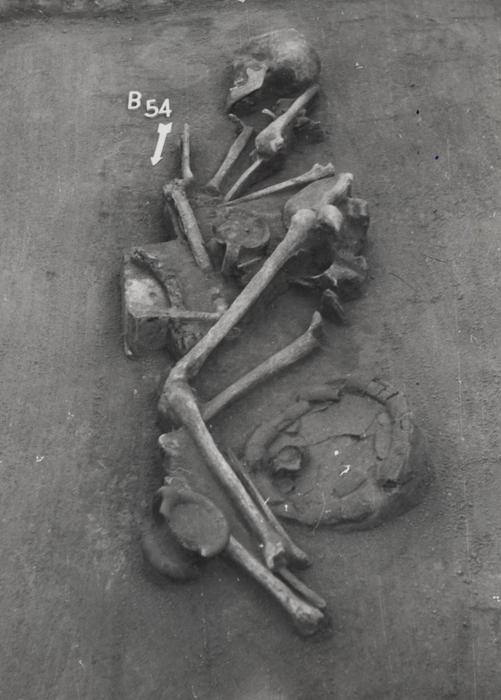An unprecedented bioarchaeological investigation into the Bronze Age cemetery of Tiszafüred-Majoroshalom in Eastern Hungary is rewriting our understanding of Central European prehistory around 1500 BCE. Spearheaded by an international collaboration led by Tamás Hajdu of Eötvös Loránd University’s Department of Anthropology and Claudio Cavazzuti from the University of Bologna, the study integrates cutting-edge isotopic and archaeobotanical analysis alongside traditional archaeological methods to explore radical shifts in diet, mobility, and social organization linked to the transitional period between the Middle and Late Bronze Age.
The cemetery at Tiszafüred-Majoroshalom uniquely spans two significant cultural epochs: the Middle Bronze Age Füzesabony culture and the Late Bronze Age Tumulus culture. This continuity offers a rare opportunity to examine lifestyles before and after a watershed moment in Central European history. The multidisciplinary approach entailed detailed isotopic assays on human remains, particularly focusing on nitrogen, carbon, and strontium isotope ratios, complemented by archaeobotanical scrutiny of dental calculus microremains, allowing for unprecedented insights into ancient diets and mobility patterns.
Nitrogen stable isotope analysis revealed marked societal disparities in diet within the Middle Bronze Age community. Access to animal protein was highly stratified, suggesting a complex social fabric where dietary privileges were unequally distributed. However, as the region transitioned into the Late Bronze Age, these differences diminished significantly. The diet homogenized and faced a reduction in overall nutritional richness, challenging earlier conceptions that Late Bronze Age populations, particularly those affiliated with the Tumulus culture, maintained robust pastoralist economies dependent on animal husbandry.
Carbon isotopic data provided compelling evidence for the introduction of broomcorn millet into the region’s subsistence economy at the dawn of the Late Bronze Age. This crop, known for its fast growth cycle and high caloric yield, emerged as a strategic resource. This finding represents the earliest direct evidence of millet consumption in European contexts, underscoring broad-scale agricultural transformations impacting food security and social organization during the period.
Strontium isotope studies brought to light distinct changes in mobility patterns between the Middle and Late Bronze Age populations. Whereas the Middle Bronze Age community included numerous individuals of non-local origin, likely from proximate regions such as the Upper Tisza basin and Northern Carpathians, the Late Bronze Age inhabitants showed a reduction in immigrant presence. Moreover, newcomers in this later period appeared to originate from geographically more distant areas, including Transdanubia and the Southern Carpathians, heralding shifts in migration routes and possibly the sociopolitical landscape of the Great Hungarian Plain.
Radiocarbon dating anchored these changes firmly to around 1500 BCE, coinciding with the rise of the Tumulus culture across Central Europe. The influx of new communities from western regions during this time supports archaeological hypotheses of widespread cultural diffusion and population movements that shaped the Bronze Age’s complex demographic tapestry.
Significantly, archaeological evidence indicates a profound transformation in settlement patterns contemporaneous with these biological shifts. Large, long-inhabited tell-settlements characteristic of the Middle Bronze Age were abandoned, replaced by less centralized, dispersed habitation networks. This settlement reorganization likely contributed to—and reflected—a loosening of social hierarchies, a theory consistent with isotopic data showing diminishing dietary stratification and reduced animal protein consumption at the societal level.
Microremain analysis from dental calculus provided a nuanced picture of dietary change. The marked decline in animal protein intake among Late Bronze Age individuals contradicts the enduring assumption that Tumulus culture populations primarily practiced pastoralism. Instead, the data suggest a more diversified subsistence base, with greater reliance on plant-based resources, especially millet, reshaping entrenched narratives of Bronze Age economies and social structures.
The integrative methodology employed by Hajdu, Cavazzuti, and colleagues encapsulates a transformative approach to bioarchaeological research. By combining isotopic geochemistry, archaeobotany, and traditional archaeological context, the study transcends disciplinary boundaries, allowing for a holistic reconstruction of ancient lifeways. This multifaceted perspective is critical in deciphering the complex processes underlying cultural and demographic transitions in prehistoric Europe.
Published in the prestigious journal Scientific Reports, the findings illuminate how shifts in mobility patterns, dietary practices, and social organization during the Late Bronze Age were synchronized with significant cultural and ecological changes. The dissolution of hierarchical social stratification, evidenced by dietary uniformity, and the movement toward more flexible settlement models signal broader adaptive responses within prehistoric societies to internal and external pressures.
Moreover, these results provide a compelling framework for reevaluating the origins and characteristics of the Tumulus culture, one of Central Europe’s defining Bronze Age phenomena. Contrary to long-held assumptions positioning it as dominantly pastoral, the new data highlight a complex society negotiating identity, economy, and social organization through multifarious strategies.
This research not only pushes back the earliest confirmed introduction of millet in Europe but also offers a detailed narrative connecting agricultural innovation with societal adaptation and migration dynamics. Such integrative bioarchaeological investigations serve as essential touchstones for understanding prehistoric human resilience and cultural evolution amid environmental and social transformations.
In sum, the Tiszafüred-Majoroshalom cemetery project epitomizes the power of advanced scientific techniques applied in tandem with archaeological intelligence to unravel the intricacies of human pasts. By revealing how people navigated profound challenges around 1500 BCE—reshaping diets, migration flows, and social networks—this study provides critical insights relevant to broader discourses on prehistoric Europe’s cultural and biological landscapes.
Subject of Research: Bioarchaeological investigation of the Bronze Age cemetery at Tiszafüred-Majoroshalom, focusing on mobility, diet, and social organization around 1500 BCE.
Article Title: Isotope and archaeobotanical analysis reveal radical changes in mobility, diet and inequalities around 1500 BCE at the core of Europe
News Publication Date: 20-May-2025
Web References:
References:
- Kovács, T. (1995). Auf Mitteleuropa weisende Beziehungen einiger Waffenfunde aus dem östlichen Karpatenbecken. In B. Hänsel (Ed.), Handel, Tausch und Verkehr im bronze- und früheisenzeitlichen Südosteuropa. Prähistorische Archäologie in Südosteuropa 11. Südosteuropa-Gesellschaft, München-Berlin, pp. 173–185.
- Dani J., Horváth A., Gémes A., Fülöp K., Szeniczey T., Tarbay JG., et al. (2025). New radiocarbon dates from the Bronze Age Tiszafüred-Majoroshalom site (Eastern Hungary). Radiocarbon, 67(2), 428–440. DOI: 10.1017/RDC.2024.123
Image Credits: Kovács 1995, Abb. 1/A, 2-3 and Dani János et al. 2025
Keywords: Anthropology, Anthropogenesis, Homo sapiens, Economics, Paleoanthropology, Human diversity, Genetic paleoanthropology, Human remains




